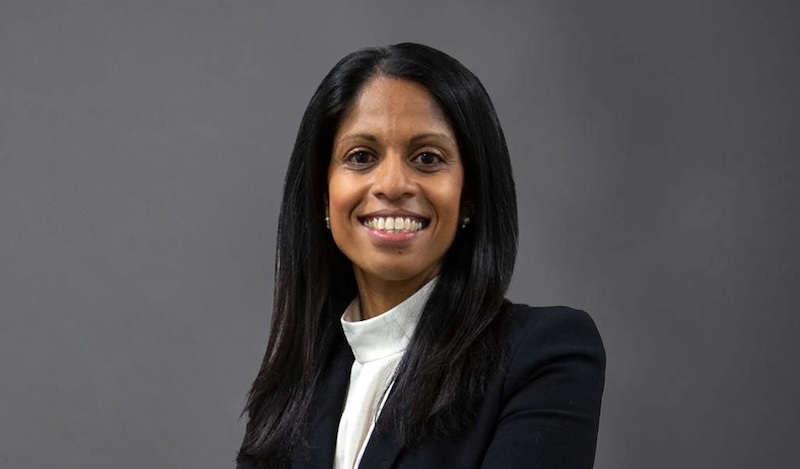Slaughter and May partner Gayathri Kamalanathan discusses her career path, shares insights into life as a disputes lawyer, and explains how the firm is integrating D&I

“My journey to partnership has been somewhat unconventional,” says Gayathri Kamalanathan, disputes partner at Slaughter and May. She began her career at another law firm, where she qualified in disputes and investigations. “During my time there, I completed a secondment at Deutsche Bank, which provided valuable insight into working in-house. In 2010, amidst the financial crisis, I was fortunate to be offered a full-time position there,” she shares. After joining another in-house team at the Danish institution Danske Bank, she eventually returned to private practice, becoming a partner at Slaughter and May just over three years ago.
Having experienced both in-house and private practice legal work, I’m eager to understand what motivated Kamalanathan to return to a law firm, particularly Slaughter and May. “I’ve always been quite open minded about my career development,” Kamalanathan admits. “The main constant in my career has been doing interesting and challenging work. Working in-house gave me insight into the commercial context behind disputes,” she explains. “However, returning to private practice allowed me to expand on that experience and work with a variety of clients. Slaughter and May felt like the right fit because, as a long-time client during my time at Deutsche Bank, I had firsthand experience of the firm’s client management approach and gained a deep understanding of the firm’s culture, which aligns closely with my own way of working.”
Working in disputes is not for the faint hearted, so I ask Kamalanathan what initially drew her to contentious practice. “I didn’t expect to be a disputes lawyer,” she says. “I always thought I wanted to be an M&A lawyer! But I really enjoy the problem-solving nature of disputes.” She’s keen to also highlight the diversity of work you experience in contentious practice, and particularly because of the multi-specialist approach at Slaughter and May. “There’s such a broad variety of subject matter and because something has gone wrong, you really have to understand the detail of it in order to be able to step back and advise on strategy. To highlight a few examples, I have worked on cases involving the intricacies of a particular software that malfunctioned, complex derivative trading, money laundering and bribery and corruption. So, the mix of work in disputes is something I’ve always really enjoyed.”
She tells me there’s a distinct personal element to working in litigation too. “You have to guide clients through issues that are really sensitive and problematic for them,” Kamalanathan tells me.
Eager to explore this further, I ask Kamalanathan how she approaches working in a practice that often revolves around crisis situations. “You need to build relationships during some of the most challenging moments in a company’s life. Often, you’re delivering difficult messages that aren’t easy for organisations to hear, and that requires a great deal of trust,” she says. “I find fulfilment in building those relationships and earning that trust.”
Since making the move to Slaughters, Kamalanathan has been able to get her hands on a huge variety of work. “I’ve been working on matters in the High Court, in arbitration, and internal investigations with a broad range of clients,” she says. “Each of those experiences has brought something new to my skillset— you learn from every experience.”
Talking of learning something new, I move the conversation towards Kamalanathan’s latest role at Slaughter and May — diversity and inclusion partner. Why, I ask, is diversity and inclusion (D&I) so important to Slaughter and May? “We believe strongly that different background and viewpoints help us make better decisions as a firm, and give the best advice to our clients,” she says. “To achieve that, we have to be an inclusive organisation where people feel comfortable to bring their authentic selves to work,” she continues. “We also have a focus here on equity and fairness for women and under-represented groups particularly from ethnic minority and lower socio-economic backgrounds.”
Before I dig into how the firm is expanding its recruitment net to promote wider inclusion, I ask Kamalanathan why D&I is so close to her heart. “I have first-hand experience as a woman and as someone from an ethnic minority background of building my career in an environment that wasn’t as diverse as it is today,’” she tells me. “So, I feel very personally invested in sharing the things I have learnt. I have been helped by several different mentors throughout my career, so I want to share that learning with others. I also feel very strongly that D&I champions don’t need to be individuals who have D&I characteristics; role models and allies can come in many forms. “Our goal at Slaughter and May is for everyone to be accountable for D&I, and for this to be integrated into the wider operations of the firm.”
With key targets across the board when it comes to D&I, Slaughter and May is firmly taking steps towards widening inclusion. “When it comes to social mobility, ethnicity, and gender equality, our targets are evidence-based and ambitious goals to increase inclusion within the firm,” explains Kamalanathan. “We are the first major law firm to set social mobility targets, so we want to be the forerunner of widening participation in the law,” she tells me.
And it’s not just targets. “We have various mentoring programmes, both internal and external,” she explains. “Recruitment is also at the heart of what we do. Working with organisations such as Rare Recruitment, upReach and The 93% Club gives us direct contact with students from lower socio-economic and ethnic minority backgrounds. We’re also signatories of the Race Fairness Commitment which helps us to integrate strategies for creating fair and inclusive work environments for black and ethnic minority employees,” she adds.
With over 11 different employee networks within Slaughter and May, recruits can also participate in their communities inside the workplace. “They are really fantastic at creating a sense of community at the firm. They play a really valuable role in creating an inclusive environment,” Kamalanathan tells me.
Drawing the interview to a close, I ask Kamalanathan for one piece of careers advice that everyone should here. “It is never too early to have a professional network,” she responds. “Whether it be building networks from university, or from vacation schemes; these networks are a key foundation to your career and will help you make the most of opportunities that may be on offer,” she says. “Be aware of your network, and nurture it.”
Meet Slaughter and May at ‘What does a world of difference look like? — With Slaughter and May’, a virtual event taking place on Tuesday 17 September. Apply now to attend
View this post on Instagram
About Legal Cheek Careers posts.


